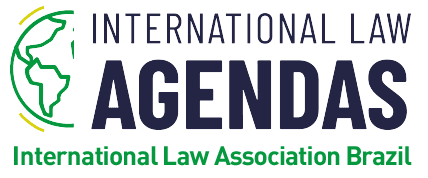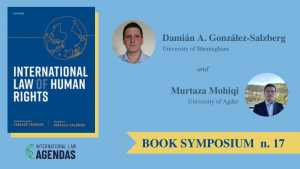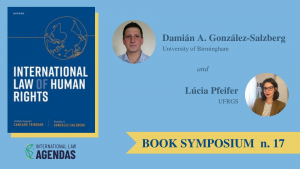On 01 March 2022, the European Court of Human Rights (“ECtHR” or “the Court”) indicated interim measures against Russia, in response to the application filed by Ukraine on 28 February 2022 alleging that Russian troops were committing “massive human rights violations” in connection with their military operations in Ukrainian territory. The Court stated that the armed conflict between the two countries raised concerns under the European Convention on Human Rights (“ECHR”) and ordered Russia to refrain from military attacks against civilians and civilian objects and to ensure the safety of medical infrastructure and personnel within the territory under attack or siege by Russian troops.
This new application—the seventh one filed by Ukraine against Russia before the ECtHR since the annexation of Crimea in 2014—is a continuation of Kyiv’s attempts to mobilise different international fora to pressure Russia into ceasing the hostilities. This post will provide a brief analysis of the interim measures granted by the ECtHR, how they relate to Russia’s obligations under international law, and what impact, if any, we might expect these measures to have on Russia’s conduct.
Interim measures in armed conflict cases
Under Rule 39 of the ECtHR’s Rules of Court, the ECtHR may, at the request of any party or person concerned, or even proprio motu,indicate binding[i] interim measures that it considers to be “in the interests of the parties or of the proper conduct of the proceedings”.
Though this requirement is not express in this provision, the practice of the ECtHR has been to limit the application of interim measures to cases evincing an imminent risk of irreparable harm, with a view to protecting the rights at stake. The Court has not, however, established a requirement that the rights invoked must be plausible.
In similar cases, involving inter-State applications discussing situations of armed conflict (Georgia v. Russia (II),Ukraine v. Russia (re Crimea), Armenia v. Azerbaijan, and Armenia v. Turkey), the ECtHR has granted interim measures ordering the parties to respect the rights of the civilian population, including by refraining to put civilians’ life and health at risk, and to comply in particular with Articles 2 (right to life) and 3 (prohibition of ill-treatment) of the ECHR. The March 2022 interim measures contain three main differences in comparison to these older ones.
Firstly, the ECtHR directed the measures expressly against Russia, instead of against both parties. This may indicate a conscious attempt from the Court to pressure Russia into putting an end to the hostilities, as the State has been called upon to do in other fora.
Secondly, the Court expressed concerns regarding risks of violations not only of Articles 2 and 3 of the ECHR, but of Article 8 (right to private and family life) as well. This is a welcome addition, as the ECtHR recognised in its final judgment of Georgia v. Russia (II) that the destruction of civilian homes is contrary to Article 8 of the ECHR. One could also consider that the massive displacements caused by the conflict interfere with the enjoyment of one’s private and family life.[ii]
Thirdly, the Court did not directly order Russia to comply with the ECHR, but instead to generally refrain from military operations targeting civilian objects and medical infrastructure.
Assessing the impact of the March 2022 interim measures
Despite these differences in formulation, the March 2022 interim measures do not essentially depart from the content of previous interim measures indicated in similar cases: they all constitute calls for the States to comply with their obligations under international law, without mentioning specific acts to be performed to that end. In ordering Russia not to attack civilian objects and medical infrastructure, the ECtHR is doing nothing more than broadly describing Russia’s obligations under the principle of distinction and the duty to respect safety zones, two of the most widely recognised customary rules of international humanitarian law (here and here).
Some scholars (here and here) have criticised the usefulness of such broad declaratory statements. After all, in most cases States already consider that they are complying with international law; merely reinforcing that duty does not necessarily demand a change in their behaviour. The present case is no different as, so far, Russia has claimed that its attacks have targeted only military objectives. Hence, Russia could argue that the interim measures did not actually require it to change the way in which it has carried out its operations in Ukraine.
Whether the ECtHR could have gone further in its interim measures is, however, subject to debate. The Court was not called to rule on the legality of Russia’s armed attack against Ukraine and, as a human rights court, would be reluctant to order Russia to cease hostilities. Though the ECtHR could in principle have been more specific in naming certain locations where the parties should not conduct the hostilities or requiring the parties to take certain measures to protect civilians (like the humanitarian corridor that was eventually agreed upon on 3 March 2022), it is not clear whether the information then available to the Court was sufficient for it to make more precise determinations.
The ECtHR’s most recent case-law does not offer much incentive for a change in how Russia has conducted the hostilities either. In Georgia v. Russia (II), the Court took the view that, during the active phase of an armed conflict, when attacks and other military operations are carried out, there exists a “context of chaos” in which one cannot consider that a State is exercising jurisdiction under Article 1 of the ECHR.[iii] Accordingly, in these scenarios, States’ human rights obligations under the ECHR are not engaged. If the Court continues to follow this reasoning, much—if not all—of the events of the past weeks will likely escape its scrutiny. Knowing that, Russia might see no harm to its interests in continuing the hostilities the way it has so far.
Lastly, it worth considering that the relationship between Russia and the ECtHR was already strained before the conflict. In 2015, the Russian Constitutional Court ruled that the State was not required to comply with ECtHR decisions that contradicted the Russian Constitution, a position that was later incorporated into Russia’s domestic law. This understanding could potentially give Russia another argument to reject interference from the ECtHR regarding its conduct in Ukrainian territory, if the State considers that its actions were justified under its constitutional order.
An open door?
In view of the above, the ECtHR’s March 2022 interim measures did not add anything new to Russia’s well-known obligations under international law and do not seem, in and of themselves, apt to bring meaningful changes to Russia’s conduct regarding the conflict in Ukraine.
As the situation evolves and new evidence comes to light, the Court can adopt new, more specific interim measures and monitor their compliance by the parties. Nevertheless, the effectiveness of any such measures may not be much higher while the fighting it is still ongoing, since, in light of the Georgia v. Russia (II) judgment, it is unlikely that the ECtHR will find that Russia exercised jurisdiction during the active phase of the conflict. The only silver lining seems to be that the interim measures at least add to the international community’s pressure on Russia with the aim of bringing the hostilities to an end. The question of how effective this pressure has been is, however, another discussion.
[i] According to the ECtHR, failure to comply with interim measures impairs the effective exercise of the right to bring a complaint before the Court, thereby breaching Article 34 of the ECHR.
[ii] So far, the ECtHR has only recognised that impeding displaced persons from returning to their homes due to foreign occupation breaches Article 8 of the ECHR.
[iii] For further analysis of the ECtHR’s approach to jurisdiction in that judgment, see here.
-

Doutoranda em Direito Internacional no Graduate Institute in International and Development Studies, com foco em direitos humanos, migração e refúgio. Assistente de docência no Geneva Centre of Humanitarian Studies.





